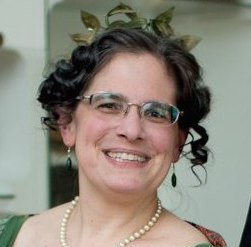(This is fourth in a series of four posts covering Paine’s Twelfth Set. The introductory post in the series may be found here, figures one and two here, and figures three and four here.)
Concluding my series on Paine’s Twelfth Set, the final figure!
No. 5, tune “La Nouvelle Fantasia“
Figure.
Chassez croisez huit, les quatre Cavaliers en avant 4 mes, les quatre dames de meme, balancez tour de mains, la Cavalier seul en avant et en arriere 8 mes, la dame seul de meme.
La Grand Promenade.
All 8 chassez across and back again, the 4 Gent: advance and retire 4 bars, the 4 Ladies the same, balancez and turn your partners, one Gent: advance and retire twice 8 bars, the opposite Lady do the same.
Promenade all 8.
